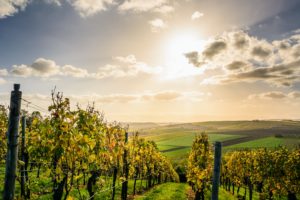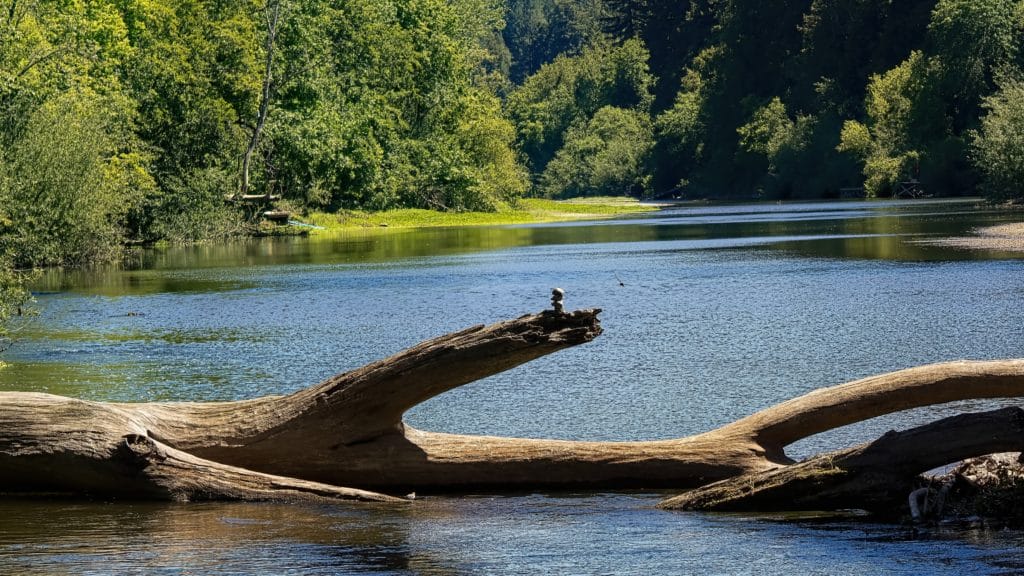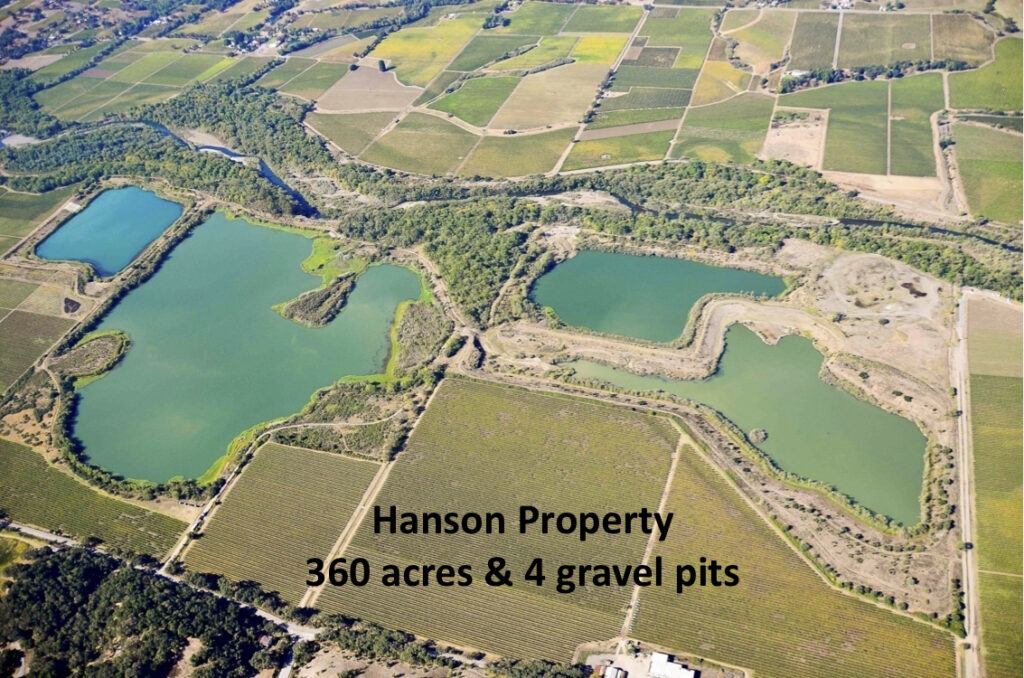Excess Sediment: A Silent Threat to Freshwater Quality and Salmon Species
 The Russian River Watershed is known for its stunning landscapes, abundant wildlife, and critical salmon habitat. However, the health of our beloved ecosystem is continually under threat from a multitude of factors, and one often overlooked yet critical concern is the presence of excess sediment. Sediment may seem innocuous, but when it accumulates in excessive amounts, it can have dire consequences for both the quality of freshwater environments and the survival of salmon species. In this article, we explore why excess sediment is harmful to our watershed, the ways in which it impacts our freshwater ecosystem and salmon populations, and what can be done to mitigate its effects.
The Russian River Watershed is known for its stunning landscapes, abundant wildlife, and critical salmon habitat. However, the health of our beloved ecosystem is continually under threat from a multitude of factors, and one often overlooked yet critical concern is the presence of excess sediment. Sediment may seem innocuous, but when it accumulates in excessive amounts, it can have dire consequences for both the quality of freshwater environments and the survival of salmon species. In this article, we explore why excess sediment is harmful to our watershed, the ways in which it impacts our freshwater ecosystem and salmon populations, and what can be done to mitigate its effects.
Understanding the Impact of Excess Sediment in our Environment
Sediment is a natural part of aquatic environments, composed of particles like silt, clay, sand, and gravel. In moderation, sediment plays a vital role in freshwater ecosystems. It provides habitat for various aquatic organisms, helps transport nutrients, and even contributes to the formation of fertile floodplains. However, when sediment levels exceed what is considered natural or typical for a given ecosystem, it becomes a major concern.
One of the most immediate and visible effects of excess sediment is the reduction in water clarity. When sediment particles are suspended in the water column, they scatter and absorb light, resulting in murky or turbid water conditions. This reduced clarity has far-reaching consequences, as it impairs the ability of aquatic plants to photosynthesize, limits the penetration of sunlight, and disrupts the food web by affecting the visual hunting abilities of many aquatic organisms.
Furthermore, sediment can carry pollutants, heavy metals, and nutrients that further contribute to water quality degradation. This contamination can lead to problems such as algal blooms, which further deplete oxygen levels in the water, creating dead zones where aquatic life cannot survive.
Excess sediment can also smother and suffocate the habitats that many aquatic species, including salmon, rely on for spawning and rearing. Salmon are particularly sensitive to changes in their aquatic environment, making them vulnerable to the effects of sediment overload, especially when already in the face of climate change and overfishing. In particular, excess sediment is known to negatively impact our salmon species at various life stages:
- Spawning: For salmon, clear gravel beds in streams and rivers are essential for successful spawning and rearing, as salmon lay eggs in these gravel beds. Sediment can clog these gravels, reducing water flow and oxygen to the eggs, leading to lower hatching success.
- Juvenile Development: Young salmon require clear water for feeding and growth. High sediment levels can reduce visibility, making it difficult for them to feed and avoid predators.
- Migration: Adult salmon migrating upstream to spawn need clear cues and paths. Sedimentation can alter these paths and make navigation challenging. Excess sediment also harms other aquatic organisms that are vital to the freshwater ecosystem. It can smother benthic invertebrates, such as mayflies and stoneflies, which serve as a crucial food source for salmon. Additionally, sediment can damage the gills of fish and clog the filter-feeding structures of various aquatic species.
Excessive sediment can also alter the physical structure of the river and streambeds themselves by filling in natural depressions, disrupting the formation of pools and riffles, and further impairing the spawning gravels essential for salmon reproduction.
Causes of Excess Sediment
Understanding the sources and degree of excess sediment in the Russian River Watershed is pivotal to effective mitigation. Some of the primary contributors include:
- Erosion: Natural processes like rainfall, snowmelt, and the movement of water can erode soil and transport sediment into rivers and streams. Human activities such as construction, logging, and agriculture can accelerate erosion by removing vegetation that stabilizes soil.
- Agriculture: Agriculture is a primary sediment contributor in our watershed due to activities like excessive tilling, inadequate soil conservation practices, insufficient setbacks, native plant removal, and use of bare soil practices.
- Urbanization: The development of urban areas often leads to increased impervious surfaces like roads and buildings. These surfaces can funnel rainwater into storm drains, carrying sediment with it and depositing it directly into rivers and streams.
Stream Channel Alterations: Modifications to stream channels, such as straightening or widening, can disrupt the natural flow of water and increase sediment transport. Dams and reservoirs can trap sediment, altering downstream flow patterns.
Mitigating the Impact of Excess Sediment
Addressing the challenge of excess sediment in the Russian River Watershed requires a collaborative approach involving local communities, industry, government agencies, and environmental organizations. Here are several strategies to help mitigate the impact of sedimentation:
- Riparian Restoration: Protecting and restoring riparian zones—areas along riverbanks and streams—is essential. Planting native vegetation stabilizes soil, reduces erosion, and filters runoff before it enters the river. While efforts to restore natural stream channels, flow pathways, and remove unnecessary blockages can help restore natural sediment transport processes and improve freshwater habitat. These strategies are known to significantly decrease the amount of sediment entering our watershed.
- Soil Erosion Control: Implementing best management practices in agriculture, forestry, and construction to reduce soil erosion is crucial. Techniques may include contour farming, cover cropping, erosion control measures, proper sediment management, and reforestation practices.
- Soil Conservation: Promoting healthy soil conservation techniques, such as no-till farming, reduction in soil compaction activities, and reforestation, can help maintain healthy soil structures and reduce sediment runoff.
Stormwater Management: Developing effective stormwater management systems in urban areas can capture and treat runoff before it reaches the river, further reducing sediment inputs. - Community Education: Raising awareness about the importance of sediment reduction and promoting responsible land use practices is vital for long-term success.
The Russian River Watershed is teeming with biodiversity and provides a vital habitat for salmon species. However, excess sediment poses a significant threat to both freshwater quality and salmon species with its detrimental effects on water clarity and habitat quality.
By understanding the causes of sedimentation, and then adopting and implementing effective mitigation measures, we can better preserve the health of our river ecosystem for all species for generations to come. It is our collective responsibility to protect the Russian River Watershed and everything that makes it so special to our community.





